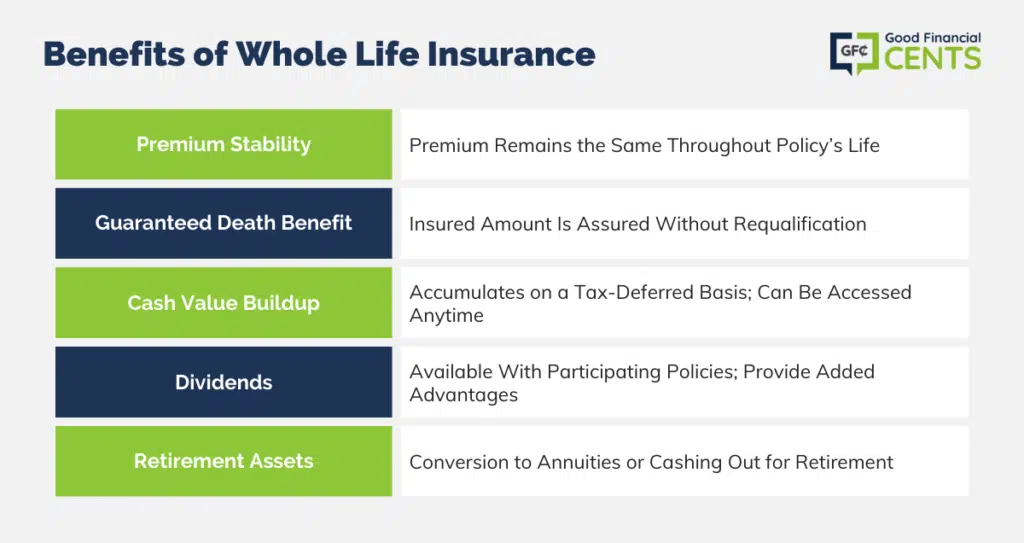How to File a Claim in a Car Accident
Filing a car accident claim can be a daunting task, but it’s crucial to get it right. By documenting the accident thoroughly, exchanging insurance details with all drivers involved, and understanding the process of filing a claim, you can ensure your rights are protected and you receive the compensation you’re entitled to. Here’s a step-by-step guide to help you navigate the process.
How to Document the Accident
The golden rule of documenting a car accident is: the more, the better. The more details you gather at the scene, the easier it will be to file a claim and prove your case. Here’s a checklist of essential information to capture:
- Take photos. Snap pictures of the damage to both vehicles, the accident scene, and any visible injuries. These photos will serve as valuable evidence.
- Exchange insurance details. Get the names, policy numbers, and contact information of all the drivers involved in the accident.
- Gather witness statements. If there were any witnesses to the accident, get their contact information and ask them to provide a written statement of what they saw.
- Report the accident to the police. This is not always necessary, but it’s a good idea if there are serious injuries or if the other driver is disputing fault.
- Get medical attention. Even if you don’t feel injured right away, it’s important to get checked out by a doctor as some injuries may not show up until later.
- Keep a record of your expenses. Keep receipts for any expenses you incur as a result of the accident, such as medical bills, car repairs, and lost wages.
- Don’t admit fault. It’s important to remain calm and polite at the scene of the accident, but don’t admit fault to anyone. This could hurt your case later on.
- Contact your insurance company. Notify your insurance company as soon as possible after the accident to start the claims process.
How to File a Claim in a Car Accident
Getting into a car accident can be a stressful and overwhelming experience. In the aftermath of a collision, it’s crucial to know how to file a claim to protect your rights and get the compensation you deserve. Here’s a comprehensive guide on how to file a car accident claim.
Contact Your Insurance Company
Time is of the essence when it comes to filing a car accident claim. You should reach out to your insurance policy provider as soon as possible after the accident. Provide them with detailed information about the incident, including the date, time, location, and the parties involved.
Your insurance company will typically assign a claims adjuster to handle your case. The adjuster will investigate the accident, gather evidence, and determine the extent of your damages. This process can take some time, so be patient and provide the adjuster with all the necessary information.
Gather Evidence
To support your claim, it’s essential to gather as much evidence as possible. This includes:
- Police report
- Medical records
- Witness statements
- Photos of the accident scene and damage
- Insurance information of the other driver(s) involved
The more evidence you have, the stronger your case will be. So take the time to collect everything you can find.
Determine Liability
Establishing liability is crucial in a car accident claim. This refers to who was at fault for causing the accident. You will need to provide evidence to support your claim of liability. This could include witness statements, police reports, or even traffic camera footage.
Determining liability can be complex, especially in cases where there is more than one driver involved. In such situations, it may be helpful to consult with an attorney to ensure your rights are protected.
How to File a Claim After a Car Accident
Filing a claim after a car accident can be a stressful process, but it’s essential to take the right steps to protect your rights and recover compensation for your injuries and damages. Here’s a comprehensive guide to help you navigate the process:
File a Police Report
Immediately following a car accident, it’s crucial to report it to the police, especially if there are injuries, significant property damage, or a dispute about fault. The police report will provide an official record of the incident, which can be helpful when filing a claim with your insurance company.
Gather Evidence
Documenting the accident is essential for building a strong claim. Take photos of the damage to both vehicles, the accident scene, and any visible injuries. Obtain witness statements from anyone who saw the accident. If possible, get the other driver’s contact information and insurance details.
Notify Your Insurance Company
Promptly report the accident to your insurance company. They will assign you a claims adjuster who will guide you through the claims process and investigate the accident. Provide your adjuster with all the information and documentation you’ve gathered.
Seek Medical Attention
Even if you don’t feel injured immediately after the accident, it’s important to get checked out by a doctor. Some injuries may not become apparent for several hours or days. Keep a record of all medical expenses related to your accident.
Hire a Lawyer (Optional)
In more complex cases, such as those involving serious injuries or disputes over fault, it may be beneficial to hire an attorney to represent you. An attorney can help negotiate with the insurance company, protect your rights, and maximize your compensation.
File Your Claim
Once you have gathered all the necessary information, you can file a claim with the insurance company of the at-fault driver. Thoroughly review the claim form and provide accurate and detailed information. Be prepared to provide documentation to support your claim.
Negotiate a Settlement
The insurance company may offer you a settlement to compensate you for your injuries and damages. Carefully consider the offer and consult with an attorney if you have any doubts. Negotiations can be complex, so don’t be afraid to stand your ground and negotiate for a fair settlement that covers all your losses.
How to File A Claim in a Car Accident
Have you been in a car accident? Are you unsure of what to do next? Filing a claim can be a daunting task, but it doesn’t have to be. Here’s a comprehensive guide to help you navigate the process and get the compensation you deserve.
Gather Evidence
The first step in filing a claim is to gather evidence. This includes taking photos of the damage to your vehicle, collecting witness statements, and obtaining medical records if you’ve been injured. The more evidence you have, the stronger your case will be.
Contact your insurance company
Once you’ve gathered your evidence, you need to contact your insurance company. They will be able to guide you through the claims process and help you file a claim. Be sure to have your policy number and the details of the accident handy.
File the claim
The next step is to file the claim. You can do this online, over the phone, or in person. Be sure to provide all of the information that the insurance company requests. They will then investigate the claim and determine whether you are eligible for benefits.
Negotiate a settlement
If the insurance company determines that you are eligible for benefits, they will make you an offer. You should carefully consider this offer and negotiate if necessary. It’s important to remember that you don’t have to accept the first offer that the insurance company makes. You can always negotiate for a higher settlement.
Accept the settlement
Once you’ve agreed on a settlement, you will need to sign a release form. This form will release the insurance company from any further liability. Be sure to read the release form carefully before you sign it.
Additional Tips
Here are a few additional tips to help you file a claim in a car accident:
- Stay calm and don’t admit fault.
- Exchange information with the other driver(s) involved in the accident.
- Get a police report if possible.
- Seek medical attention if you’ve been injured.
- Don’t sign any documents or give any statements to the other driver’s insurance company without first speaking to your own insurance company.
How to File a Car Accident Claim: A Step-by-Step Guide
In the wake of a car accident, the aftermath can be overwhelming. From dealing with injuries to repairing your vehicle, it’s easy to feel lost and unsure of where to start. Filing an insurance claim is a crucial step in the process, but it doesn’t have to be a daunting task. Here’s a comprehensive guide to help you navigate the process and get the compensation you deserve.
Document the Scene
Immediately after the accident, your first priority should be to ensure your safety and seek medical attention if necessary. Once you’re safe, it’s essential to gather as much information as possible about the accident. This includes taking photos of the damage, exchanging insurance information with the other drivers involved, and obtaining witness statements if available.
Contact Your Insurance Company
As soon as possible, contact your insurance company to report the accident. They will provide you with a claim form and guide you through the process. Be honest and provide as many details as possible about the accident and the extent of the damage.
Complete an Insurance Claim Form
The insurance claim form is a comprehensive document that gathers all the necessary information about the accident and your claim. It includes sections for your personal information, the details of the accident, witness statements, photos, and any other supporting documentation.
Gather Supporting Documentation
In addition to the claim form, you’ll need to submit supporting documentation to support your claim. This can include medical records, repair estimates, or police reports. The more evidence you can provide, the stronger your case will be.
Negotiate Your Settlement
Once the insurance company has reviewed your claim and supporting documentation, they will make an offer for a settlement. This is the amount of money they are willing to pay to cover your damages. It’s important to carefully review the settlement offer and negotiate if you believe it’s not fair and reasonable. Don’t be afraid to seek legal advice if necessary.
How to File a Claim in a Car Accident
After a car accident, it’s crucial to know how to file a claim to get the compensation you deserve. Here’s a comprehensive guide to help you navigate the process:
Gather Information
Immediately gather essential details like the other driver’s name, contact info, insurance company, and policy number. Take pictures of the accident scene, damage, and any injuries. File a police report to document the incident.
Notify Your Insurance Company
Inform your insurance provider about the accident as soon as possible. They’ll assign an adjuster to guide you through the claims process. Provide them with the information you gathered.
Determine Fault
Establish who was at fault for the accident. This will impact who pays for the damages. The police report or your insurance company’s investigation can help determine liability.
File a Claim
Submit a formal claim to the at-fault driver’s insurance company. Provide all the documentation you’ve collected, including the accident report, photos, and medical records.
Negotiate a Settlement
Your insurance adjuster will negotiate a settlement amount with the other driver’s insurance company. Factors like property damage, medical expenses, and lost wages will influence the compensation.
Follow Up with the Insurance Company
Once you’ve filed a claim, stay in touch with your insurance adjuster. Provide any additional information they request, such as medical updates or repair estimates. Promptly respond to their inquiries and keep a record of all communications for future reference. By maintaining open communication and promptly addressing the insurance adjuster’s requests, you can ensure a smooth claims process and expedite the settlement.
Get Legal Help if Needed
If the insurance company denies your claim or offers an insufficient settlement, don’t hesitate to seek legal advice. A lawyer can represent your interests and help you get fair compensation.
How to File a Claim in a Car Accident
Being involved in a car accident can be a stressful and overwhelming experience. If you’re the victim, the first thing you need to do is seek medical attention. Once you’re stable, you’ll need to file a claim with your insurance company. This guide will help you through the process step by step.
Step 1: Gather Information
After an accident, it’s important to gather as much information as possible. This includes your insurance policy number, the other driver’s insurance information, and the police report. You should also take pictures of the damage and any injuries sustained.
Step 2: File a Claim
Once you have all the necessary information, you can file a claim with your insurance company. You can do this online, over the phone, or in person. Make sure to provide your insurance company with all the details of the accident.
Step 3: Cooperate with the Insurance Company
Once you’ve filed a claim, your insurance company will investigate the accident. They will likely want to speak to you about what happened and request documentation such as medical records and repair estimates.
Step 4: Negotiate a Settlement
Once the insurance company has completed their investigation, they will offer you a settlement. This is the amount of money they are willing to pay to cover your damages and injuries. You can negotiate with the insurance company to get a fair settlement.
Step 5: Accept the Settlement
Once you’re satisfied with the settlement, you can accept it. You’ll need to sign a release form, which means you won’t be able to file any further claims against the insurance company.
Step 6: Get Your Car Repaired
Once you’ve accepted the settlement, you can get your car repaired. You can choose to use any auto repair shop you want.
Step 7: Follow Up with the Insurance Company
After your car is repaired, you should follow up with the insurance company to make sure they have processed your claim and paid you the full amount of the settlement. You should also make sure that the insurance company has closed your file.
How to File a Claim in a Car Accident
If you or someone you know has been in a car accident, knowing the steps to take to file a claim is vital. Being unfamiliar with the process can be stressful and overwhelming, especially when dealing with injuries and potential property damage. Here’s a detailed guide on how to file a claim after a car accident:
Exchange Information
After you’ve ensured the safety of yourself and any passengers, exchange information with the other driver(s) involved in the accident. This includes your name, address, phone number, insurance company, and policy number. It’s also crucial to take photos of the accident scene, any visible damage to the vehicles, and any injuries sustained.
Contact Your Insurance Company
Notify your insurance company about the accident as soon as possible. They’ll guide you through the claims process, provide you with a claim number, and assign you an adjuster who will investigate the accident and determine the amount of compensation you’re entitled to.
Gather Evidence
To support your claim, compile as much evidence as possible. This may include:
- A copy of the police report
- Witness statements
- Photographs of the damage and injuries
- Medical records
- Estimates for repairs or replacement of your vehicle
Negotiate with the Insurance Company
Once you’ve gathered all the necessary information, it’s time to negotiate a settlement with the insurance company. The adjuster will review your claim and make an initial offer. You can negotiate back and forth until you reach an amount that fairly compensates you for your losses.
File a Lawsuit if Necessary
If you’re unable to reach a satisfactory settlement with the insurance company, filing a lawsuit might be necessary. This involves hiring an attorney who will represent you in court. However, legal action should only be considered as a last resort, as it can be time-consuming, expensive, and not always successful.
Conclusion
Filing a car accident claim can be a complex process, but by following these steps and gathering the necessary evidence, you can increase your chances of receiving fair compensation for your injuries and damages. Remember to prioritize your safety and well-being above all else, and don’t hesitate to seek legal advice if needed.




Leave a Reply